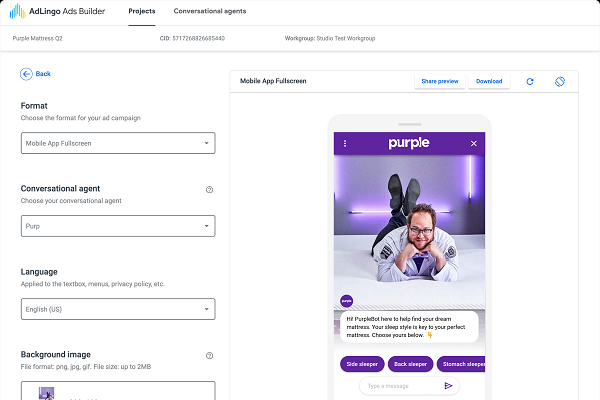Google Launches AdLingo Ads Builder to Simplify Integrating Chatbots into Ads
 Google has launched a new tool for building interactive ads with chatbots. AdLingo Ads Builder simplifies the process of creating an ad, including an artificial intelligence-powered chatbot, right as chatbots are seeing a resurgence fueled in part by the current COVID-19 health crisis.
Google has launched a new tool for building interactive ads with chatbots. AdLingo Ads Builder simplifies the process of creating an ad, including an artificial intelligence-powered chatbot, right as chatbots are seeing a resurgence fueled in part by the current COVID-19 health crisis.
AdLingo Addition
Adlingo Ads began as a startup incubated in Google’s Area 120 program in 2018. The service helps companies create advertisements that include a chatbot that can answer questions posed by a user. Theoretically, that makes someone more likely to purchase whatever is being advertised. The new AdLingo Ads Builder tool, currently in beta, puts the whole creation system into a straightforward template when the companies can upload the pictures, data, and chatbot in one go. AdLingo claims it speeds the setup process so that it takes only a tenth of the time to finish compared to the earlier method and that more than 30 brands are using the service now.
“Our product delivers results for advertisers by advancing potential customers from discovering a product to considering its purchase in one single ad, at a competitive cost compared to other channels. For example, Renault used AdLingo for the new ZOE electric car launch to address French drivers’ preconceptions about electric vehicles. The campaign helped position Renault as a trusted advisor to consumers,” AdLingo co-founder Vic Fatnani explained in announcing the new tool. “In creating AdLingo, we’re on a mission to use conversational AI to foster stronger relationships between customers and businesses.”
Chatbot Chatter
Making it easier to integrate a chatbot into an ad fits right into the current spike in chatbot development. Google debuted its new Meena chatbot in February as an example of the cutting-edge of AI chatbots, for instance. Three months later, Facebook launched its new Blender open-source chatbot platform. Facebook explicitly compared Blender to Meena, proclaiming that Blender was the best, most-like chatbot ever built. But, while Meena and Blender could lay the foundation for the next generation of chatbots, the current technology is plenty to draw new interest during the COVID-19 pandemic. Healthcare providers, government agencies, and enterprise service companies are all rushing to build, update, and publish AI-powered chatbots and voice assistants to connect and inform people right now.
The actual format can vary a great deal, such as the telephone-based AI in France answering questions about the coronavirus, Estonia’s government-built chatbot, or the WhatsApp chatbots built by India and the UK. The healthcare industry has plenty of options too, like Orbita’s interactive voice and text chatbots, Hyro’s free coronavirus-focused version of its virtual assistant, or Microsoft’s templates for health-focused chatbots. With so many people working from home and the strain on the economy, AI-based customer services folded into an ad that can be built quickly without technical expertise may become a new standard when browsing online.
Follow @voicebotai Follow @erichschwartz
France Launches Telephone Voice Assistant for Coronavirus Questionnaire
Mayo Clinic Publishes COVID-19 Alexa Skill Exempted from Amazon Limit
British Tech Agency Prototypes Coronavirus Quiz Voice App for NHS








